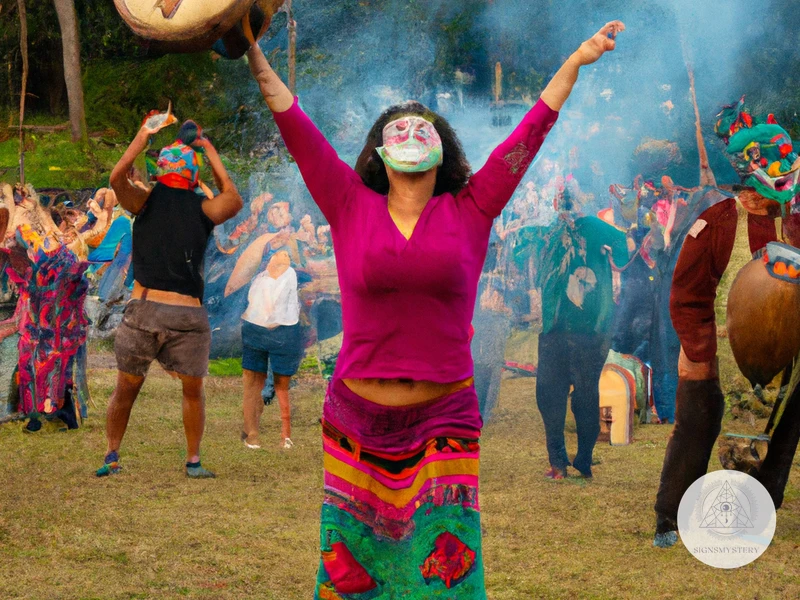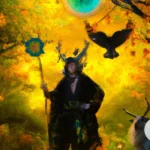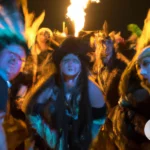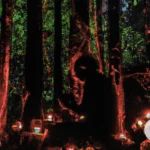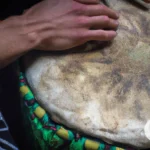The Origins of the Relationship Between Dance and Shamanism
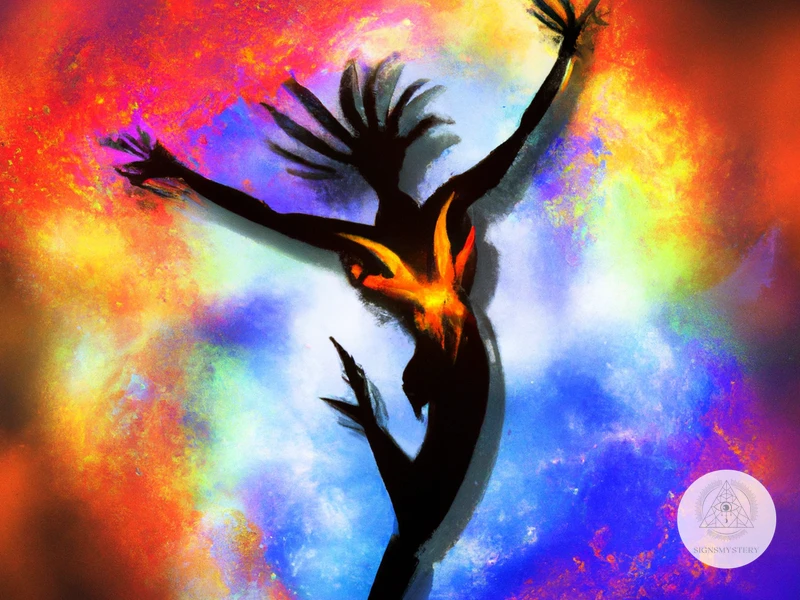
The origins of dance in shamanism can be traced back to ancient times. In many cultures, dance was seen as a way to connect with the divine. For shamans, dance was a way to enter into a trance state and communicate with the spirit world.
In shamanic cultures, dance was often performed as part of ritual ceremonies. The movements of the dances were thought to represent the natural world, and were used to invoke the energies of the earth, sky, and various deities.
Dance was also used to create a sense of community and togetherness. It was a way for people to come together and share in a sacred experience, and to connect with one another on a deep, spiritual level.
Many ancient cultures saw dance as a way to heal the body and mind. Through the movements of dance, people were able to release negative emotions and blockages, and to connect with their inner selves.
The relationship between dance and shamanism is deeply rooted in the spiritual practices of ancient cultures. The use of dance in shamanic rituals continues to this day, and is still seen as an important way to connect with the divine and to heal the self and others.
The Spiritual Power of Dance in Shamanic Healing
The relationship between dance and shamanism dates back to ancient times. For shamans, dance is a powerful tool for connecting with the spirit world and facilitating healing. The act of dancing allows the shaman to enter into a trance state, where they can access spiritual guidance and energies that can aid in the healing process. Rhythm is an essential element in this process, with the repetitive beat of the music helping to induce an altered state of consciousness. Dance is also seen as a form of prayer in shamanic practice, allowing the shaman to communicate with the divine and offer up their intentions. The connection between movement and emotion is another important aspect, with dance helping to release and transform emotional energy. Incorporating dance into shamanic healing can help to enhance the spiritual power of the practice and bring about deeper healing on all levels. Those interested in learning more about the role of ecstatic dance in shamanism can check out the article on /ecstatic-dance-ritual-shamanic-practice/.
The Role of Rhythm
One of the most powerful aspects of dance in shamanic healing is its ability to create rhythm. Rhythm is the foundation of all music and movement, and it has a profound effect on the human body and mind. It is believed that the rhythm of drums and other instruments can help alter brain waves and induce trance-like states, which is essential for shamanic journeys.
According to research, the human body has an innate response to rhythm, known as entrainment. This entrainment is what causes us to tap our feet, nod our heads, and move our bodies to the beat of music. Entrainment is also what makes dance such a powerful tool in shamanic healing.
In shamanic practice, dancing to a consistent rhythm helps to focus the mind and enter into a meditative state. Through this meditative state, shamans can access the spiritual realm and connect with spirits for guidance.
In addition to aiding in shamanic journeys, rhythm also has other benefits for the mind and body. It can help reduce stress and anxiety, as well as boost energy levels. It also has a therapeutic effect on mental health conditions such as depression and ADHD.
The role of rhythm in dance is an essential component of shamanic healing. It helps to create a meditative state and allows shamans to access the spiritual realm. Additionally, rhythm has other benefits for the mind and body, making it a powerful tool in promoting overall well-being.
If you want to learn more about healing ecstatic dance for shamanism, check out this article.
Dance as a Form of Prayer
has been an integral part of shamanic practice for centuries, and is considered a powerful way to communicate with the divine. When we dance, we activate our bodies and minds in a way that is conducive to spiritual transmission. The rhythm of the music is felt in our bones, and we move with intention, offering our bodies as a vessel for the divine to move through us. In this way, dance becomes a profound form of prayer.
In many shamanic cultures, dance is used to call upon the spirits, honor ancestors, and offer gratitude to the earth. The movements are often symbolic, representing animals or elements of nature, and are imbued with spiritual meaning. For example, the Eagle Dance of the Hopi people represents the connection between earth and sky, and is performed to honor the eagle as a messenger of the divine.
Another form of dance used in shamanic practice is the ecstatic trance dance, which involves entering into a state of altered consciousness through repetitive movement and the use of music. This type of dance is often used for spiritual journeys, allowing the dancer to connect with spirit guides and receive messages from the divine.
As a form of prayer, dance allows us to express our deepest emotions and connect with the divine in a way that transcends language and culture. It is a universal language of the soul, a way to communicate with the divine that is beyond words. In shamanic practice, dance is considered a sacred act, connecting us to the spiritual realms and allowing us to tap into the wisdom and power of the universe.
Dance as a form of prayer can be a powerful tool for spiritual growth and healing. It allows us to connect with something greater than ourselves, and opens us up to the transformative power of the divine. Whether through traditional cultural dances or more contemporary forms of ecstatic dance, the act of moving our bodies with intention and reverence can be a deeply spiritual experience.
The Connection between Movement and Emotion
The Connection Between Movement and Emotion
Dance is a powerful form of self-expression that can help us connect to our emotions and release them. Movement can be a way of communicating what words alone cannot express. When we dance, we can tap into our deepest emotions, allowing them to flow through us without judgment or inhibition. There are several ways in which movement and emotion are interconnected:
- Body Awareness: When we move our bodies, we become more aware of how they feel. This awareness can help us identify where we hold tension or pain, which can indicate emotional blocks. By moving these areas, we can release the emotions that are stored there. Identifying these areas can also help us recognize bodily sensations that indicate different emotions.
- Release of Emotions: Movement can help us express and release emotions that we may have difficulty verbalizing. When we dance, we can embody the feeling we want to express, allowing the emotion to move through us and release. This can be especially healing for individuals who have experienced trauma or are struggling with mental health issues.
- Connection Between Mind and Body: Dancing can help us better understand the connection between our thoughts, feelings, and physical sensations. By focusing our attention on our movements, we can become more aware of what is going on in our minds and bodies. This can help us manage our emotions more effectively and make better decisions.
Shamans have long understood the connection between movement and emotion. Ancient shamanic cultures used dance as a way of connecting with the spiritual realm and releasing negative energies. Today, many shamanic practitioners continue to use dance to facilitate healing and transformation. If you want to learn more about how dance is used in shamanic practice, check out these articles:
- The Role of Ecstatic Dance in Shamanism
- Ecstatic Dance Styles for Shamanic Practice
- Ecstatic Dance to Connect with Your Spirit
The Healing Benefits of Dance for the Mind and Body
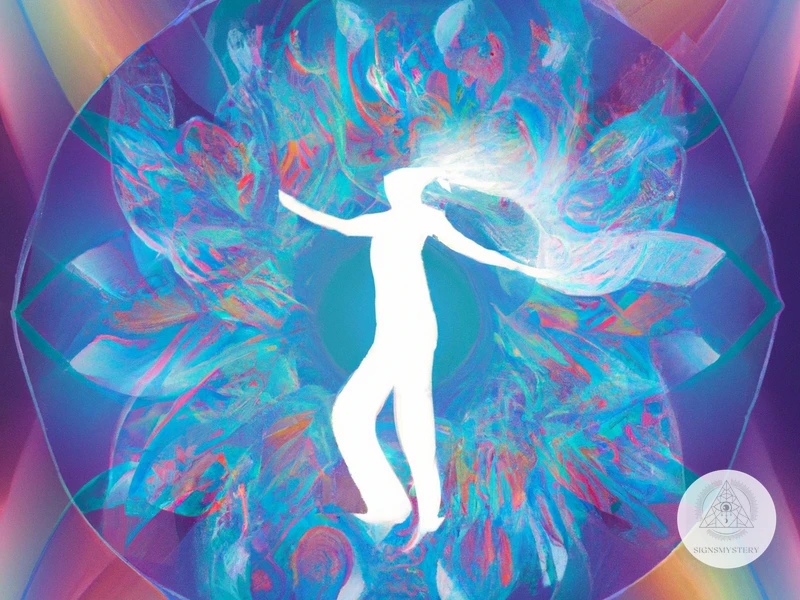
Dance has been used for centuries as a form of therapy for the mind and body. Studies show that dance can reduce stress and anxiety levels by promoting the release of endorphins, which are known to improve mood and overall well-being. Dancing also boosts immunity and energy levels by increasing circulation and stimulating the lymphatic system. Additionally, dance encourages self-awareness and personal growth by allowing individuals to express themselves freely through movement and connect with their emotions. In fact, dance therapy has become a widely recognized form of treatment for a range of mental health issues, including depression and trauma. Incorporating dance into your wellness routine can have a positive impact on both your physical and mental health.
Reducing Stress and Anxiety
Stress and anxiety are two of the most common mental health issues that people experience in modern society. Research has shown that dance can be an effective tool for reducing both stress and anxiety. Dancing helps release endorphins, which are natural chemicals in the brain that promote feelings of relaxation and well-being. When you dance, your body also releases serotonin and dopamine, which are neurotransmitters that help regulate mood and reduce stress.
In addition to the physical effects of dance, the social component of dancing can also help reduce feelings of stress and anxiety. Dancing with others creates a sense of community and connection, which can help combat feelings of loneliness and isolation. This social aspect of dance can be particularly beneficial for individuals who struggle with social anxiety.
Dance can also serve as a form of meditation. When you dance, you enter a state of flow, where you become fully engrossed in the present moment and let go of any worries or stresses. This meditative quality of dance can help reduce feelings of anxiety and promote a sense of inner peace.
Incorporating dance into your daily routine can greatly benefit your mental health. Whether it’s taking a dance class, dancing at home, or simply moving your body to music, finding a way to incorporate dance into your routine can help reduce stress and anxiety and improve overall well-being. So next time you’re feeling stressed or anxious, put on some music and let your body move to the beat. Your mind and body will thank you.
Boosting Immunity and Energy
One of the most amazing benefits of dance in shamanic healing is its ability to boost immunity and energy. Dancing stimulates the lymphatic system, which is responsible for eliminating toxins and waste from the body. As the body moves, lymph fluid is pumped through the lymph nodes, which produce the white blood cells that fight off infections and illnesses.
In addition to boosting immunity, dancing also increases energy levels by releasing endorphins, the body’s natural feel-good chemicals. When we dance, our bodies release endorphins that reduce pain and stress, making us feel more alive and energized. This rush of endorphins enhances our overall well-being and strengthens our immune system, helping us to fight off illnesses more effectively.
Dancing also improves cardiovascular health, which provides more oxygen and nutrients to the body’s cells, promoting healing and energy flow. A strong cardiovascular system the body’s natural ability to heal itself more effectively.
Dance as a form of shamanic healing helps to release energy blockages caused by emotional or physical imbalances. Dancing allows us to express our emotions and release any negative energy that may be polluting our mind, body, and spirit. This energetic cleansing can help restore balance to the body’s energy field, which can profoundly boost our immune system and energy levels.
Incorporating dance into our shamanic practice can provide multiple health benefits, including boosting our immunity and energy levels. It promotes healing and detoxification, releases endorphins that reduce pain and stress, and helps us to balance our emotions and energy bodies. So, if you are feeling low, you can put on some music, let your body move, and experience the healing power of dance.
Encouraging Self-Awareness and Personal Growth
Encouraging self-awareness and personal growth is one of the greatest benefits of incorporating dance into shamanic healing practices. Through dance, individuals can reconnect with their bodies and emotions, which can result in a deeper understanding of themselves.
Dance provides a safe and sacred space for individuals to express themselves freely and release any pent-up emotions. As individuals become more comfortable with their bodies and movements, they begin to let go of their inhibitions and open themselves up to new experiences.
Dance also has the ability to foster creativity and help individuals connect with their inner wisdom. By tapping into their intuition and allowing their bodies to move freely, individuals can access a deeper sense of clarity and understanding.
Incorporating dance into shamanic healing practices can also help individuals overcome deep-rooted fears and emotional blockages. As they become more aware of their movements and emotions, they are better able to identify and address any areas of their lives that may be holding them back.
Dance has the power to encourage self-awareness and personal growth in a profound way. By opening oneself up to the healing power of movement and rhythm, individuals can tap into their true potential and cultivate a greater sense of understanding and connection with themselves and the world around them.
How to Incorporate Dance into Your Shamanic Practice
Incorporating dance into your shamanic practice can add a powerful dimension to your spiritual journey. To create a sacred space, set up an altar with meaningful objects and light candles or incense. Choose music with a strong beat that speaks to your soul and use instruments such as rattles or drums to enhance the rhythm. As you begin to move, visualize your intentions and let your movements become a form of prayer. Empower yourself by wearing symbolic clothing or jewelry and allow your body to express the energy of the moment. Remember that dance is a universal language of the soul, and there is no right or wrong way to move. Allow yourself to be fully present in the moment and let the healing benefits of dance nurture your mind, body, and spirit.
Creating a Sacred Space
Creating a sacred space is crucial when it comes to incorporating dance into your shamanic practice. A sacred space is a physical and energetic environment that allows you to connect with the divine and access deeper levels of
Subscribe to Our Newsletter
Sign up to receive the latest news and updates.
| Step | Description |
|---|---|
| 1. | Choose a location that is quiet and free from distractions. It could be a corner of a room or a separate room altogether. |
| 2. | Clear the space of any clutter and negative energies. You can smudge the area with sage or palo santo to cleanse the energy. |
| 3. | Set up your altar. An altar is a space where you can place items that represent your intention and connect you with the divine. It could be crystals, candles, flowers, or anything else that resonates with you. |
| 4. | Add elements that will help you connect with the divine, such as plants, crystals, or images of deities. |
| 5. | Ensure that the lighting is soft and soothing. You can use candles or fairy lights to create a magical ambiance. |
| 6. | Select a comfortable spot to dance. You can lay down a rug or mat to create a comfortable surface for movement. |
Creating a sacred space helps you to set your intention and focus your mind on your shamanic journey. It provides a safe and nurturing environment where you can explore the deeper aspects of yourself through movement and dance. Remember to keep your sacred space clean and energetically charged, so that you can continue to connect with the divine in this special place.
Choosing the Right Music and Instruments
When choosing the right music and instruments for your shamanic dance practice, it’s important to think about the mood and energy that you want to create in your sacred space. Some shamans prefer the use of traditional indigenous instruments like drums, rattles, and flutes, while others prefer modern electronic music that incorporates natural sounds and rhythms.
If you decide to use traditional instruments, it’s important to choose ones that are made with respect and intention. Shamans believe that every instrument has a spirit and energy of its own, so it’s important to find an instrument that resonates with you and feels aligned with your intention.
Drums are a popular choice for shamanic dance because they provide a steady beat that can help you connect with the rhythm of the earth and the natural world. You can experiment with different types of drums, such as frame drums, djembes, and congas, to find the one that feels most comfortable for you.
Rattles are also commonly used in shamanic dance, as they create a high-pitched, shaking sound that can help to clear stagnant energy from the body and mind. You can either purchase a traditional indigenous rattle or make your own using natural materials like gourds, seeds, or shells.
When it comes to choosing music for your shamanic dance practice, look for music that speaks to you on a deep level and helps you to connect with your spiritual intention. This can be anything from indigenous music to electronic music to classical music, as long as it creates the energy and mood that you desire.
Remember that ultimately, the most important thing is to choose music and instruments that you feel connected to and that help you to cultivate a deeper sense of spiritual awareness and connection. Trust your instincts and experiment until you find the perfect combination for you and your practice.
Setting Your Intention and Empowering Your Movement
In shamanic dance, setting your intention is an essential step that helps you focus your mind on your goals and desires. Your intention may be to heal a specific ailment, connect with a spirit guide, or simply deepen your meditation practice. Before you start dancing, take a few moments to contemplate your intention and visualize it as clearly as possible.
Once you have set your intention, it’s time to empower your movement by allowing your body to express your innermost feelings and emotions. To do this, you need to let go of any self-consciousness or judgment and allow your body to move freely and spontaneously. Some people find it helpful to close their eyes and focus on the sensations in their body as they move. Others prefer to start with slow, gentle movements and gradually build up to more energetic, rhythmic dancing.
Here are some tips for setting your intention and empowering your movement in shamanic dance:
| Tip | Description |
|---|---|
| Choose a specific intention | Instead of setting a vague intention like “healing,” get specific about what you want to achieve through your dance. For example, “I intend to release the emotional blockages that are causing my physical pain.” |
| Visualize your intention | Take a few moments to close your eyes and visualize your intention as vividly as possible. See yourself experiencing the healing or transformation you desire. |
| Cultivate a sense of inner trust | Trust your body’s wisdom and allow it to guide your movements. Don’t worry about looking silly or “doing it wrong.” |
| Use music to inspire your movement | Choose music that resonates with your intention and allows you to express your emotions fully. Let the music guide your movements and inspire your creativity. |
| Include stillness and silence | Don’t be afraid to pause during your dance or sit in stillness. This can help you integrate and process the emotions and insights that arise during your practice. |
By setting your intention and empowering your movement in this way, you can tap into the transformative power of shamanic dance and experience profound healing, self-discovery and personal growth. So why not give it a try and see what magic unfolds?
Dance as a Universal Language of the Soul
Dance has been revered as a universal language, a means of communication that transcends cultural and linguistic boundaries. It is a non-verbal form of expression that reaches beyond words and touches the core of the human experience. Through dance, we can share our stories, our emotions, and our spirituality. It allows us to connect with others and to express our innermost thoughts and feelings in a way that words alone cannot.
The Dance as a Reflection of the Self
Dance can be seen as a reflection of the self, a mirror of our innermost being. It gives us the opportunity to explore and express our deepest fears, hopes, desires, and joys. In shamanic practice, dance is often used as a means of journeying within, a way of accessing the spiritual realms and connecting with spiritual guides and ancestors. Through dance, we can shed our everyday identities and become something more, something greater than ourselves.
A Universal Language of Connection
Beyond its status as a form of personal expression, dance is also a means of connecting with others. It is a shared experience that can bring people together in a way that is inclusive and healing. It has the power to break down barriers and create bridges of understanding between people of different cultures and backgrounds. Whether it is through traditional folk dances, contemporary dance performances, or spontaneous movement, dance can be a language of unity and harmony.
The Dance as a Spiritual Practice
For many people, dance is not just a form of entertainment or exercise, but a spiritual practice. It can be a way of connecting with the divine and accessing a sense of transcendence. In shamanic practice, dance is often used as a means of invoking spiritual entities and calling upon the forces of nature. It can be a way of entering into altered states of consciousness and achieving a sense of union with the universe.
Conclusion
Dance is a powerful and versatile means of communication, expression, and connection. As a universal language of the soul, it has the ability to touch us on a profound level, connecting us with our innermost being and with others in a way that transcends cultural and linguistic boundaries. Through dance, we can access the spiritual dimension of ourselves and our world, and experience a deeper sense of meaning and purpose in our lives.
Conclusion
In conclusion, dance has been an integral part of shamanic healing for centuries. Through movement and rhythm, individuals are able to connect with their innermost selves and tap into the spiritual realm. Dance serves as a form of prayer, allowing individuals to express themselves and connect with a higher power.
Moreover, the healing benefits of dance extend beyond just the spiritual realm. It has been shown to be an effective tool for reducing stress and anxiety, boosting immunity and energy, and promoting self-awareness and personal growth. By incorporating dance into your shamanic practice, you can enhance the healing experience for both yourself and your clients.
It is important to create a sacred space and choose the right music and instruments that resonate with your intentions. By setting clear intentions and empowering your movements, you can tap into the spiritual power of dance and elevate your shamanic practice to new heights.
Dance truly is a universal language of the soul, transcending cultural and linguistic barriers. It is a powerful tool for healing and transformation, bringing individuals closer to their true selves and to the divine. So, whether you are a seasoned shamanic practitioner or simply looking to incorporate more movement into your spiritual practice, don’t underestimate the transformative power of dance.
Frequently Asked Questions
What is shamanic healing?
Shamanic healing is a holistic approach to healing that involves connecting with the spiritual realm and using various techniques to restore balance and harmony to the mind, body, and spirit.
What types of dance are commonly used in shamanic healing?
In shamanic healing, different types of dance are used based on the intentions and needs of the individual. These can include trance dance, ecstatic dance, and guided movement.
How does dance benefit mental health?
Dance has been shown to improve mood, reduce stress, and boost self-confidence and self-esteem. It also helps to release endorphins and other feel-good chemicals in the brain.
What role does intention setting play in shamanic dance?
Intention setting is an important aspect of shamanic dance as it allows the individual to focus their energy and set a clear intention for the healing process.
How can dance improve physical health?
Dance is a form of exercise that can help to improve physical fitness and coordination. It also helps to stimulate the lymphatic system, boost circulation, and promote flexibility.
What are some common instruments used in shamanic dance?
Common instruments used in shamanic dance include drums, rattles, and other percussion instruments. These are used to create a rhythm that facilitates the trance state required for healing.
What is the role of the shaman in shamanic dance?
The shaman serves as a guide and facilitator during shamanic dance, helping the individual to connect with their spirit guides and access deeper levels of healing.
Can dance be used as a form of meditation?
Yes, dance can be used as a form of meditation as it allows the individual to focus their attention on the movement and rhythm, clearing the mind and promoting relaxation.
What are the benefits of incorporating dance into my daily self-care routine?
Incorporating dance into your daily self-care routine can help to reduce stress and anxiety, improve overall well-being, and promote self-expression and creativity.
Is it necessary to have prior dance experience to participate in shamanic dance?
No, prior dance experience is not necessary to participate in shamanic dance. It is an intuitive and spontaneous form of movement that encourages individuals to release judgment and move in a way that feels natural to them.

